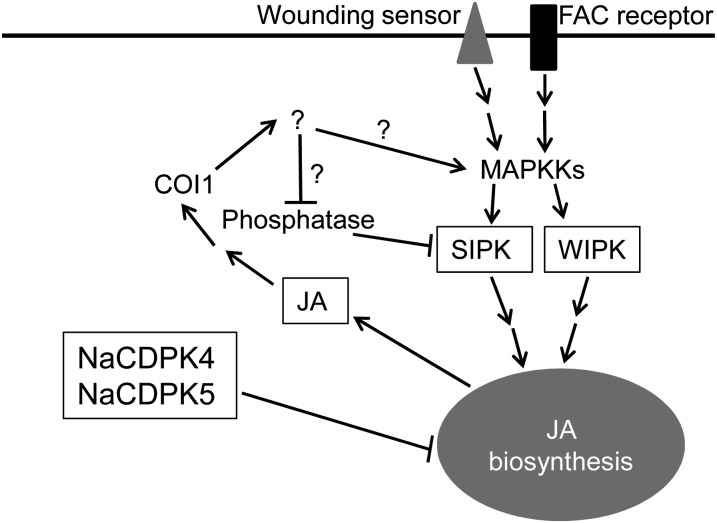Figure 10.
A working model summarizing early wounding- and herbivory-induced responses in N. attenuata. Wounding and FACs in M. sexta OS are perceived by wounding sensors and FAC receptors and in turn activate downstream MAPK signaling, including SIPK and WIPK. Using an unknown mechanism, NaCDPK4 and NaCDPK5 negatively control JA biosynthesis. Furthermore, when JA attains high concentrations, JA has a feedback function on SIPK activity through a COI1-mediated pathway by either activating the upstream MAPKKs (such as MEK2) or by reducing the activity of SIPK-specific phosphatases. Question marks indicate hypothetical signaling molecules or pathways.

